by Clinton Parks
Becoming an NRMN Grant Writing Coach
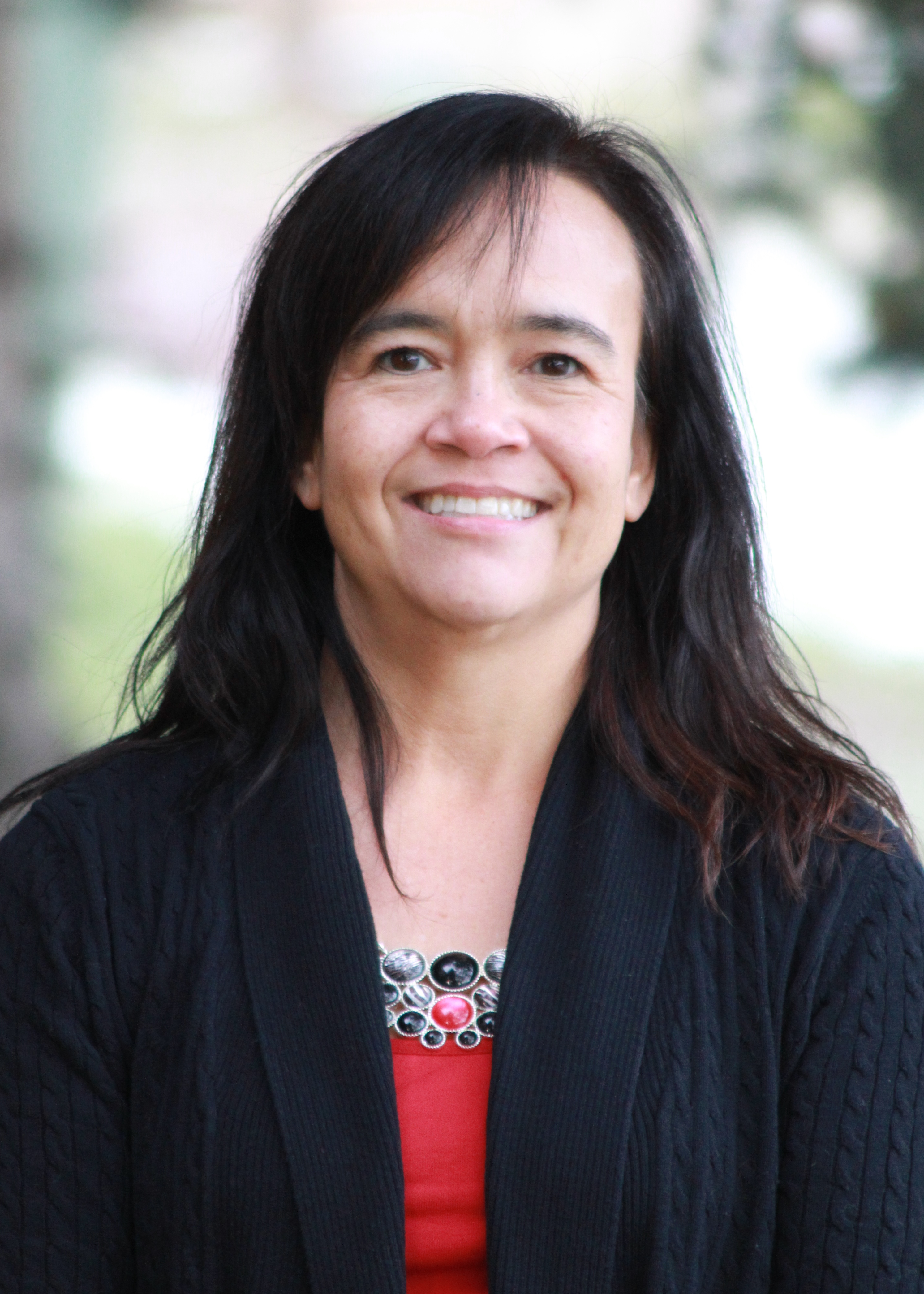
Denise Dillard
As a psychologist, Denise Dillard has made a career of providing mental health care to the Alaskan community she comes from. She teaches the subject as an adjunct at Alaska Pacific University and heads the research department at Southcentral Foundation, a health and wellness provider for Alaska Native and American Indian people living in Anchorage, the Matanuska-Susitna Borough, and nearby villages. But she has seen too few fellow Alaskan Native STEM professionals — she is of Inupiaq heritage — so she jumped at the chance to be a coach for the National Research Mentoring Network (NRMN) when her long-time mentors and GUMSHOE directors Dedra Buchwald and Spero Manson asked. The GUMSHOE program (or Grantwriting Uncovered: Maximizing Strategies, Help, Opportunities, Experiences) is one of four NRMN models that teach groups of postdocs and early career researchers how to write competitive grants.
The National Institutes of Health (NIH)-funded NRMN program is designed, among other goals, to address problems pointed out in a 2011 Science paper that found a statistical disparity between black scientists and whites seeking NIH Research Project Grants, or R01s. NIH data showed that from 1985 to 2013 underrepresented minority applicants remained less likely to receive funding than whites.
NRMN’s Four Models of Grant Writing Coaching Groups
NRMN’s four coaching models differ from one another with respect to the duration of the program, specific teaching methods used, as well as the level and type of subject matter included, with each program being best suited to rising investigators at a particular stage of their research career. GUMSHOE and NRMN STAR (or NRMN Steps Towards Academic Research Fellowship Program) are designed to help those expecting to start work on a grant within the next year and who therefore need to learn the basics. The NRMN-P³ (or NRMN Proposal Preparation Program) and NU (or Northwestern University Model Grant Writers Coaching Group) programs are designed for those currently working on grants.
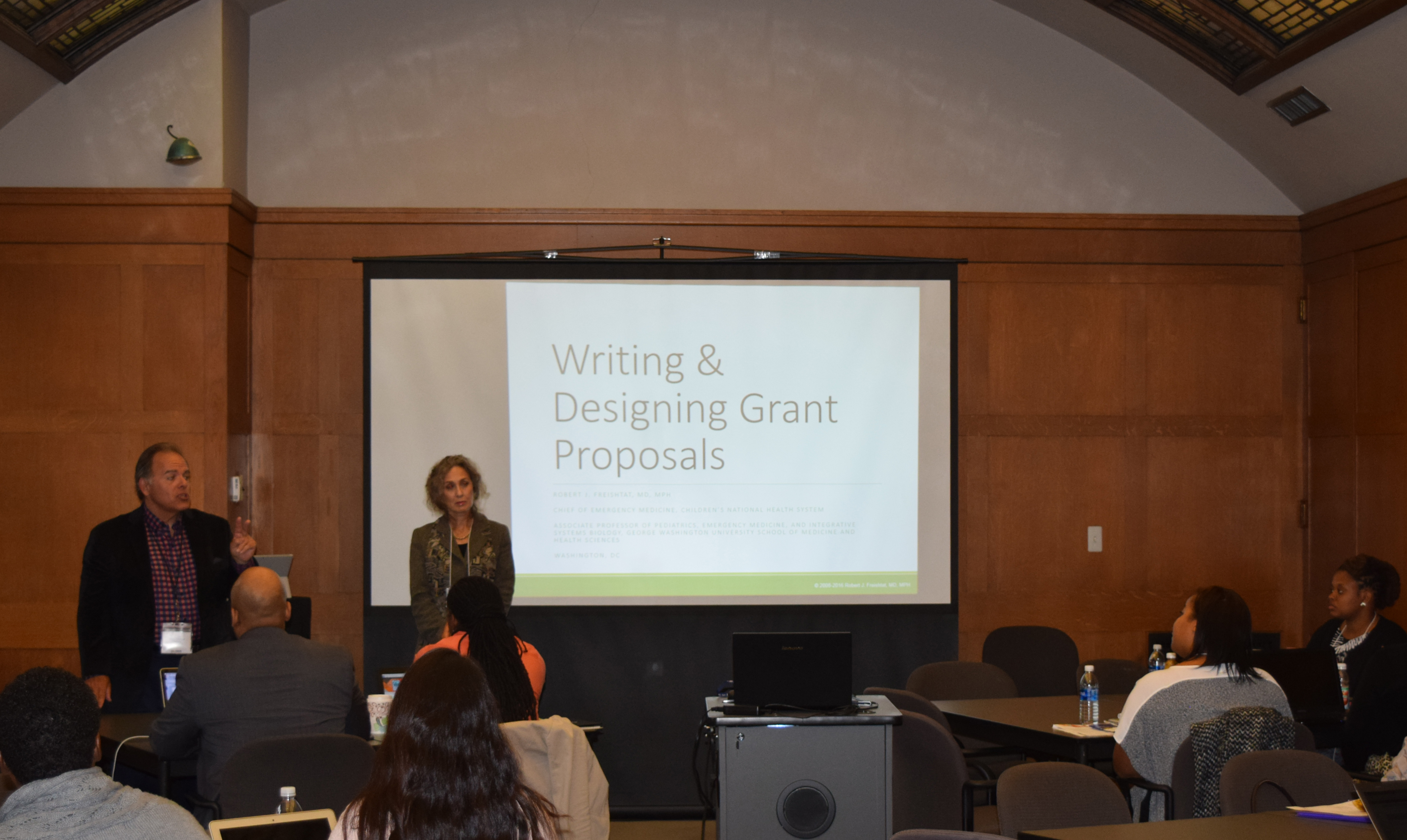 Above: Founding GUMSHOE program directors Drs. Spero Manson, left, and Dedra Buchwald, during a session with a GUMSHOE cohort of mentees
Above: Founding GUMSHOE program directors Drs. Spero Manson, left, and Dedra Buchwald, during a session with a GUMSHOE cohort of mentees
Unlike any of the other NRMN grant writing coaching group models, GUMSHOE specializes in training researchers engaged in population research with specific populations. Dillard’s cohort focused on addressing some of the unique considerations inherent in research on Native American and Alaska Native populations, for example, while other cohorts focus on one of several other underrepresented groups such as Black/African American populations or Rural domestic populations (participants in GUMSHOE are not required to be a member of the given population of focus in order to be eligible to join the cohort). A specific challenge for those studying Alaska Native and Native American populations is the need to maintain close ties to specific communities. “Staying in the community is really important to doing good research” for members of her cohort, she says. Not only are the target populations often in areas away from universities and research institutions but many live in sovereign communities. Dillard compares this to doing international work with the need to get certain permissions and approvals, a process that can be time-consuming. So researchers in her cohort and those doing similar work must be flexible.
The NRMN models accommodate this flexibility since activities take place largely independent of a specific location, Dillard says. “That distance delivery model [NRMN provides] is really beneficial” since mentees rarely have to leave their communities or home institutions to benefit from the coaching offered. Dillard describes the eight-month GUMSHOE program as three days of didactic, in-person training at the University of Colorado followed by planned, periodic check-ins via email or phone.
A big challenge for Alaska Natives and Native Americans in STEM professions is that they may be the only person of that ethnicity with their specialty, according to Dillard. She notes that for population scientists it’s often necessary to translate cultural idiosyncrasies to the typical, unfamiliar reviewer — whether that involves the work being done, the environment, the researcher’s role, or the researcher’s ability to successfully conduct research.
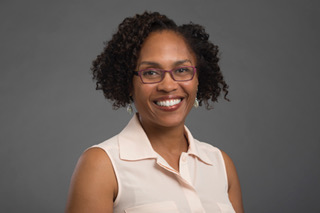
Lisa Barnes
Lisa Barnes, a professor in neurological sciences and behavioral sciences at Chicago’s Rush University Medical Center, has noted a similar disconnect among scientists of color and what she calls “mainstream” scientists. The NRMN STAR coach notes that people of color generally study topics that are often not as highly valued as mainstream science topics, which themselves often marginalize the participation of people of color. While science is often thought of as neutral and apolitical, recent findings continue to suggest that it can be subject to some of the same biases and prejudices as other aspects of humanity.
During the 12-month-long NRMN STAR program, Barnes and other participants met at the University of North Texas Health Science Center (UNTHSC) at least four times. The six coaches each worked with two of the 12 total mentees in the cohort. “It was pretty intense,” she says. Some of the coaches in Barnes’ NRMN STAR cohort were social scientists like herself, while others were immunologists, or studied other areas.
NRMN STAR focuses on professional development with a nuts-and-bolts approach to grant writing, focusing on developing basic writing and other skills that provide a foundation for both grant writing and the mentees’ general professional development. It’s based on the “STAR” program used at its home institution, UNTHSC where it’s headed by faculty member Harlan Jones. It was Jones along with Jamboor Vishwanatha, also faculty at UNTHSC and one of NRMN’s Principal Investigators, who brought Barnes on board as an NRMN STAR coach.
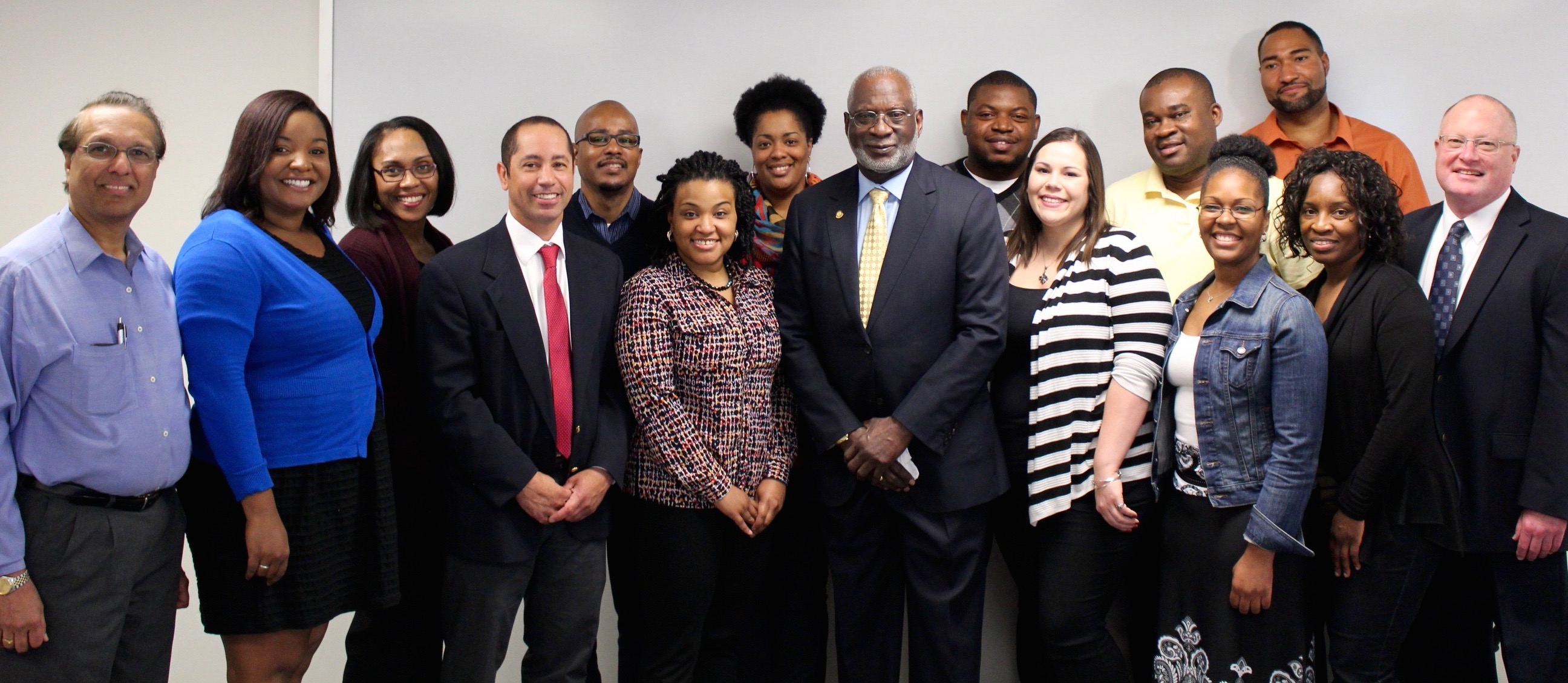 Above: NRMN STAR 2015-2016 cohort with former Surgeon General Dr. David Satcher at University of North Texas Health Science Center’s Research Appreciation Day (RAD); Vishwanatha: first from left; Barnes: third from left; Jones: fourth from left
Above: NRMN STAR 2015-2016 cohort with former Surgeon General Dr. David Satcher at University of North Texas Health Science Center’s Research Appreciation Day (RAD); Vishwanatha: first from left; Barnes: third from left; Jones: fourth from left
Barnes is a big believer in the STAR curriculum, one she describes as grabbing mentees by the hand once they come in the door and holding their hand until they’ve left. For underrepresented groups in STEM “the pipeline is really a funnel,” she says. Not only the amount but also the proportion of people of color gets narrower the further you go through. When not given favorable reviews on grants, candidates from underrepresented groups are less likely to resubmit, Barnes says. That’s why she believes it’s important to coach them before they apply for that first grant; developing mental toughness is necessary to be a grant-winning researcher, Barnes notes.
Models for Mentees More Experienced with Grant Proposal Writing
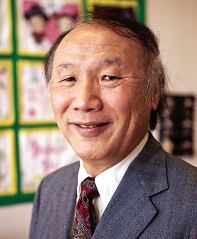
Moon Chen
Moon Chen of the University of California, Davis, who studies cancer health disparities, particularly among Asian-Americans, has also noticed that sort of toughness and positive attitude among mentees in the NRMN-P³ cohort he coaches. He was pleased by how quickly they overcame their reservations to provide candid yet constructive feedback.
The NRMN-P³ and the NU programs, being tailored to those currently working on grants, assume the mentees have some experience writing grants and “are ready to write at the program’s start.” There’s an emphasis on peer review and mentees are expected to submit the grants they’ve been working on to NIH at the end of their program.
NRMN-P³ is based on the four-month method built by Anne Marie Weber-Main at the University of Minnesota, from whom Chen learned about the model and how to be a coach within the program. Chen has since adapted the NRMN-P³ curriculum to best suit his mentees’ needs. His cohort consists of Native Hawaiians, Pacific Islanders, and Asian Americans while many of the other cohorts assembled to date have involved more researchers from other denominations such as Black or Latinx (each cohort accepts applications from researchers of all backgrounds). It’s also distinct in that it has more physicians in its cohort than most other NRMN groups thus far. But these are physicians who want to advance their fields and study populations, unlike typical clinicians who focus on single patients.
Relative to the foundational curriculum for NRMN-P³ developed by Weber-Main, Chen’s approach with his cohort at UC Davis implements some unique teaching methods. Chen organizes cohort members into one of three groups: clinicians (Chen’s group), basic scientists, and behavioral/population scientists. He believes these specialty divisions provide for greater interpersonal relatability, synergy, and accountability.
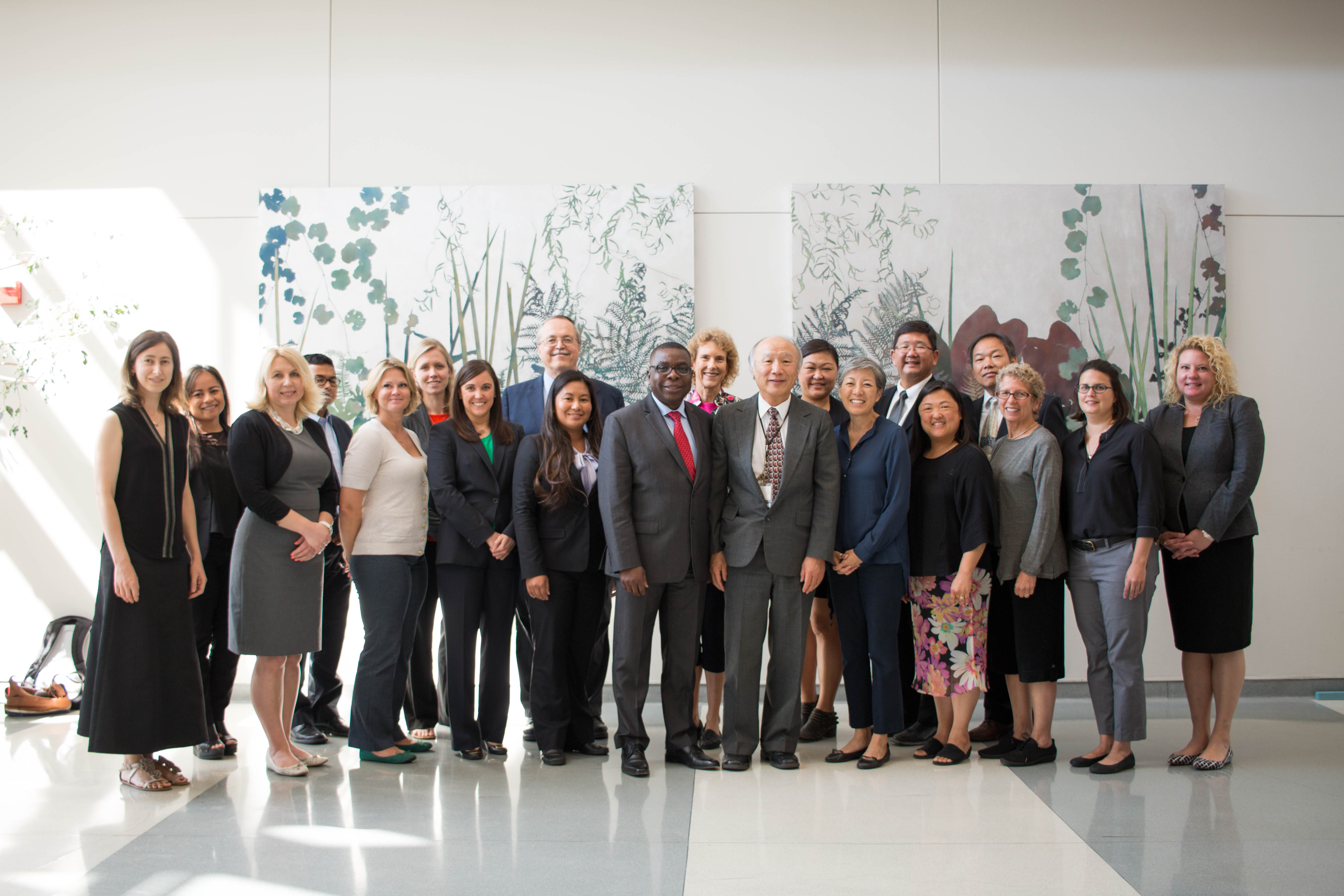 Above: Moon Chen (center) with NRMN Principal Investigator Kola Okuyemi (to Chen’s right/ viewer’s left) and the cohort of mentees at the kickoff session of the NRMN-P³ program at UC Davis
Above: Moon Chen (center) with NRMN Principal Investigator Kola Okuyemi (to Chen’s right/ viewer’s left) and the cohort of mentees at the kickoff session of the NRMN-P³ program at UC Davis
Chen likens his teaching style in the program to that of a sports coach. While coaches may not be able to do what they’re asking the athlete to do, they can tell the athlete how to do it better, he says. And that outside perspective is valuable when considering strategies and perspectives in grant writing. He’s also not a believer in the didactic method: “I think people learn best by doing.” Teaching, he says, is not a one-size-fits-all approach.
It’s best for those going into academia to submit a competitive grant application within four years of receiving their doctorate since time is a factor in getting NIH funding, Chen notes. He feels it’s his obligation, being himself funded by the NIH, to give back and pass that knowledge down to others, especially those who have faced similar struggles.
Chen has been fighting the battle to increase diversity in STEM for a long time, and he is not alone. Meeting face-to-face has helped break down those initial barriers people have in trusting one another, according to Ann Etgen, emeritus professor of neuroscience at New York City’s Albert Einstein College of Medicine where she serves as coach implementing NRMN’s NU model. She’s been fighting to increase diversity in STEM at Einstein for 25 years among summer undergraduate students, as well as with Ph.D. and M.D./Ph.D. students. She helped begin the Summer Program in Neuroscience, Excellence and Success at Woods Hole in Massachusetts as a board member for the American Psychological Association. From the mid- to late 2000’s she sat on Society for Neuroscience (SfN) committees focused on upping the number of women and underrepresented minorities in science. They realized that diversity in STEM doctorates was increasing but few were getting faculty positions because they were not winning grants. “We needed to be doing more to help the successful transition from junior faculty to promoted faculty,” according to Etgen. Those SfN committees helped bring about the use of one-on-one coaching sessions to help these junior faculty, she says.
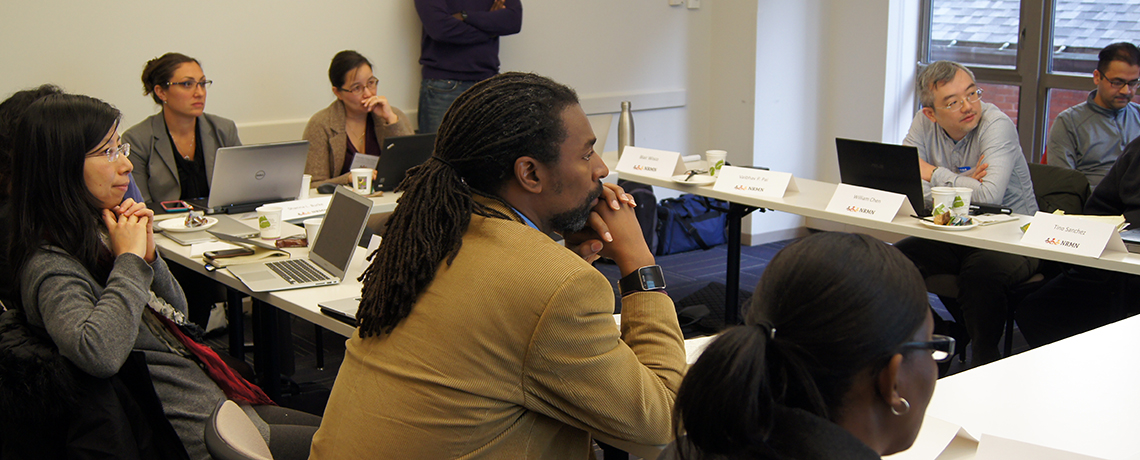 Above: An NU cohort of mentees during a lecture by Daniel Jay (not visible) at Tufts University Sackler School of Biomedical Sciences in Boston, an additional coach hosting the NU grant writing program at his institution
Above: An NU cohort of mentees during a lecture by Daniel Jay (not visible) at Tufts University Sackler School of Biomedical Sciences in Boston, an additional coach hosting the NU grant writing program at his institution
But those sessions were done intermittently and lacked substantive personal connections. With more time available now as a professor emeritus she wanted to sign up as an NRMN coach, so she contacted her colleague Rick McGee, Associate Dean for Professional Development at Northwestern University’s Feinberg School of Medicine and the NU model program director.
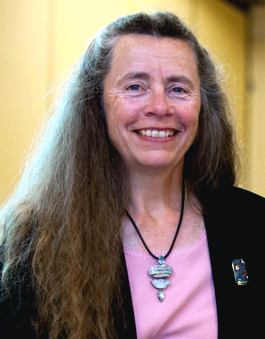
Ann Etgen
NU model participants meet in person initially and then interact every two to three weeks online, Etgen says. The program runs for three to four months. Mentees are taught the rhetorical language patterns that are proven to be most effective when proposing a grant. The latest of Etgen’s cohorts included four neuroscientists whose research includes the genome database, epilepsy, and multielectrode recordings of mood.
With cohorts comprising such diverse research interests from program to program, all the NRMN coaching groups invite NIH program officers to contribute their expertise in activities such as mock study sections. Non-expert coaches and other mentees also take part in the review process, since actual grant proposal review boards of 20-25 people typically contain only one or two who will have expertise in the given field, Etgen says. “Everybody in the group reads everybody’s material,” Etgen says. “You can’t write your grant just for the experts in your field.” Getting feedback from people whose background and expertise varies is necessary to “frame, justify, and explain [the proposed research to] anyone that’s scientifically literate,” she says.
Dillard concurs. Getting perspectives from those of other disciplines helps sharpen the writing by necessitating the writer make the science clear enough for non-experts to understand. And while her cohort also consists of different disciplines, a good grant application always requires coherent writing and logic.
And that’s where the coaches come in. “Grant writing isn’t something you’re born knowing how to do; it’s a teachable skill,” Etgen says. So they take it “sentence by sentence, paragraph by paragraph.” Barnes calls the NRMN STAR process “grant writing 101” in which every section of the grant is explored, as experts are brought in to talk about every step, and individual roadmaps are built to navigate mentees through career obstacles.
The Road Ahead
The coaches agreed that it’s still too soon to know if their efforts are having the desired impact and all agree that their coaching groups should be continued. “It takes time to see a reversal trend,” Chen says. And with NRMN being relatively new and NIH applications taking a year to be ruled on, he thinks it’s premature to evaluate whether they’re making a dent yet. While Dillard knows any change will take time, she’s encouraged that NIH leaders are willing to make changes and spend money on the problem just by creating NRMN, which signals progress.
Etgen believes NIH funding is disproportionately concentrated among a few researchers. “I don’t think that’s the best way [for NIH] to spend their money.” Worse, she doesn’t think the racial climate in science is getting any better, saying that institutionalized racism effuses our society, and that includes scientific panels. “That being said, you can’t give up. It’s not an easy thing.”
But there are signs of hope among the networks that NRMN is fostering. After all networks were how most of the coaches here become so. Dillard found that her own network has also been expanded by GUMSHOE when she learned that another Alaska Native had recently been hired at a local school for a STEM position. One of Barnes’ NRMN STAR mentees has reached out to her for help and another has gotten a position at the NIH. “That felt special,” she says, believing that she’s had a part to play in their success.
For more information about NRMN’s grant writing coaching groups and the four curricular models, contact NRMN’s Professional Development Core via email at pdc@nrmnet.net.